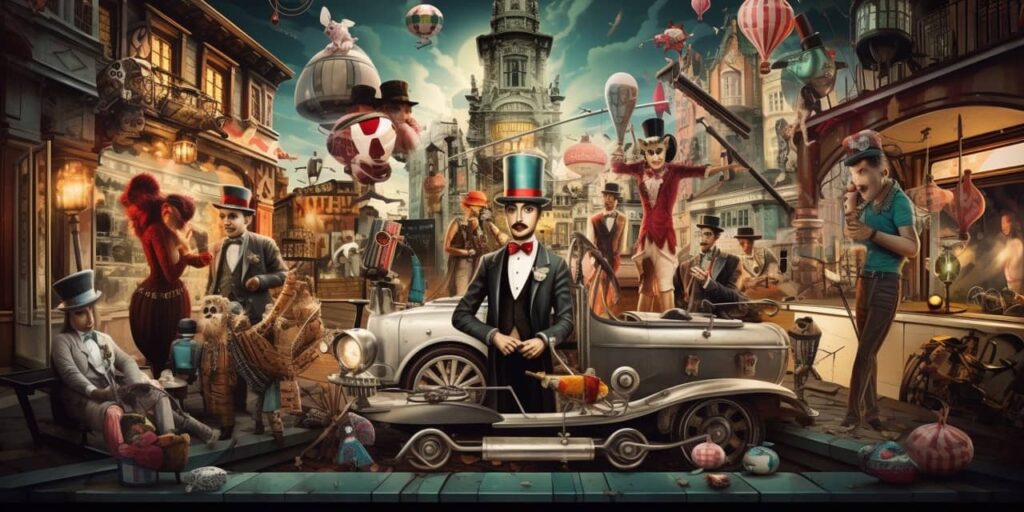We’ve all encountered them – those generalizations and assumptions about people based on their nationality, race, gender, or any other characteristic. Stereotypes. They’re deeply ingrained in our culture and society, often popping up where we least expect it. Yet despite their prevalence, most of us are aware that these broad-brush pictures don’t reflect the complexities of real individuals.
I’ll confess: I too have stumbled into the trap of stereotyping at times. It’s an easy mistake to make when we’re constantly bombarded with oversimplified images and ideas about different groups of people. But let’s get one thing straight right off the bat: stereotypes aren’t usually grounded in truth.
While they might contain a grain of reality here or there, more often than not they’re distorted versions of what’s actually out there in the world. It’s important to remember that every person is unique; no one individual can represent an entire group or category. In this post, we’ll take a closer look at some common stereotypes and shed light on why it’s high time we moved beyond them.
Understanding Stereotypes: A Brief Overview
I’ve often observed that stereotypes are a common part of our everyday lives. They’re like shortcuts our brains use to quickly understand the world around us. But here’s the catch – these assumptions can lead to generalized and oversimplified ideas about certain groups of people.
Just think about it for a second. How many times have you heard someone say, “All millennials are lazy,” or “Women aren’t good at math”? These statements, my friends, are prime examples of stereotypes in action. They pigeonhole individuals into rigid categories based on their gender, race, age or other characteristics without considering their unique personalities and abilities.
Now let’s delve a bit deeper into why stereotypes exist in the first place. Psychologists believe they stem from our inherent need to categorize information as a way of making sense of the world around us. It’s easier for us to group people based on shared traits than it is to understand each person on an individual level.
Stereotypes also tend to stick around because they’re continually reinforced by society and media. I mean, just turn on your TV or scroll through your social media feeds! You’ll likely spot countless instances where specific demographic groups are portrayed in stereotypical ways.
But here’s the kicker – while some stereotypes may seem harmless or even amusing, they can have serious consequences. Negative stereotypes can lead to prejudice and discrimination, creating barriers for individuals who don’t fit neatly into society’s preconceived boxes.
I truly believe that understanding and challenging these widespread beliefs is crucial if we want to foster more inclusive communities where everyone feels valued and respected for who they really are.
The Psychology Behind Common Stereotypes
Ever wondered why stereotypes persist, even when they’re proven wrong? Let’s dive deep into the psychology behind it. It turns out, our brains are hardwired to categorize information in a bid to understand and interpret the world around us. This is what leads to stereotyping.
To start, let’s look at some studies that shed light on this phenomenon. Researchers from New York University found that stereotypes are formed based on repeated experiences with individuals and groups who share similar characteristics or behaviors. Over time, these patterns become “hard-coded” in our minds through a process called heuristics—our brain’s way of creating mental shortcuts.
Here’s an example:
| Average Number of Encounters | |
|---|---|
| Group A (Stereotyped) | 1000 |
| Group B (Non-stereotyped) | 50 |
In this hypothetical scenario, if you’ve encountered Group A a thousand times compared to just fifty times for Group B, your brain would naturally form more assumptions about Group A purely based on exposure frequency.
Another key player in stereotype formation is confirmation bias—the human tendency to seek out and remember information that confirms our existing beliefs while ignoring or forgetting contrary evidence. For instance, if someone believes all techies are socially awkward because of their experience with a few such individuals, they’ll likely focus on instances where techies demonstrate awkward behavior while disregarding situations where they don’t.
Finally yet importantly, social influences—from family upbringing to media portrayals—can significantly shape our perceptions and reinforce stereotypes over time. If we grow up hearing negative comments about a particular group or see them constantly depicted negatively in movies or TV shows, it can be difficult to shake off these deeply ingrained biases.
So there you have it—an insight into how common stereotypes come about from a psychological perspective. But remember: understanding why something happens doesn’t make it right or acceptable. It’s crucial to challenge our biases and work towards a more inclusive mindset. After all, stereotypes can have real world impacts on people’s lives, affecting opportunities and outcomes in areas such as education, employment, and social interactions.
Prevalent Racial and Ethnic Stereotypes
Let’s dive into the deep end of racial and ethnic stereotypes. A hot-button issue, it’s a topic that often gets swept under the rug. Yet, it’s vital to shine a light on these misconceptions for better understanding and mutual respect among diverse cultures.
Racial stereotypes tend to box people into preconceived notions based on their race or ethnicity. For instance, there’s the stereotype that all Asians excel in math and sciences – an assumption that can lead to pressure and unrealistic expectations. Another common stereotype is associating Latinx individuals solely with manual labor jobs, thus undervaluing their potential contributions in other fields.
There are also sweeping generalizations made about African-Americans, often linking them predominantly to sports or music industries while overlooking their achievements in various other sectors. Similarly, Middle Easterners frequently face stereotypes related to terrorism due to media portrayal post 9/11.
It’s important to note that such stereotypes not only oversimplify individuals but also perpetuate harmful biases. According to a study by APA:
| Percentage | |
|---|---|
| Asians | 70% report being stereotyped |
| African-Americans | 75% report being stereotyped |
| Latinx | 78% report being stereotyped |
These figures underline how widespread the issue is across different communities.
Stereotypes may seem harmless on the surface but they’re far from it. They can impact everything from job opportunities to interpersonal relationships by creating skewed perceptions of people based on their race or ethnicity alone.
In essence, challenging these prevalent racial and ethnic stereotypes is crucial for fostering inclusivity and equality in our society. Only through open dialogue and education can we hope to unravel these deeply embedded narratives.
Gender Stereotypes: An In-depth Look
Let me tell you, it’s crucial to understand that gender stereotypes are deeply ingrained in our society. They’re not just harmless assumptions; they have real-world impacts on how we perceive ourselves and others. A common stereotype, for instance, is the idea that men are strong and assertive while women are nurturing and emotional. This perception can greatly limit individuals’ potential and personal growth.
Here’s some food for thought – a study by the American Psychological Association found that girls tend to shy away from careers in STEM (Science, Technology, Engineering, Mathematics) due to societal beliefs about their supposed lack of aptitude in these areas.
| Gender | Percentage Avoiding STEM |
|---|---|
| Girls | 32% |
On the flip side – stereotypes don’t just affect women. Men too face restrictions due to societal expectations. For instance:
- Men should be ‘breadwinners’
- They shouldn’t show emotions
- They must enjoy sports
These stereotypes contribute to toxic masculinity which can lead to mental health issues among men.
Remember folks, it’s important not only to challenge these harmful stereotypes but also educate ourselves and others about their implications. By doing so we can foster a more inclusive environment where everyone feels valued for who they truly are – beyond their gender roles.
Next time when you come across gender stereotyping remember – it isn’t just ‘boys being boys’ or ‘girls being girls’. It’s limiting potential. It’s perpetuating inequality. It’s time we moved past these archaic notions towards a world where everyone is recognized for what they bring to the table as individuals!
Stereotypes in Media and Pop Culture
I’ve often noticed how media and pop culture play a significant role in promoting stereotypes. It’s surprising to see the extent of their influence on societal perceptions. Let’s consider television, for instance. For decades, TV shows have been guilty of perpetuating racial, gender, and cultural stereotypes.
Think about it. The geeky Asian kid who’s good at math but socially awkward? That’s a stereotype we’ve seen overused in numerous sitcoms and movies. The ditzy blonde woman or the macho man are other examples that immediately spring to mind. These portrayals reinforce preconceived notions instead of challenging them.
Interestingly enough, a study by the National Communication Association found that viewers who watch more television are likely to have stronger stereotypical beliefs. Just take a look at these numbers:
| Television Hours Per Week | Strengthened Stereotypical Beliefs |
|---|---|
| Less than 10 | 35% |
| 10 – 20 | 45% |
| More than 20 | 55% |
Media has immense power to shape public opinion which is why this topic warrants our attention. When broadcasters use harmful stereotypes as comedic fodder or plot devices without deeper exploration or challenge, they’re indirectly endorsing those views.
Moreover, pop culture isn’t just restricted to the silver screen or your TV set anymore – it’s everywhere! Social media platforms like Twitter, Facebook, Instagram are brimming with content that can either perpetuate or break down stereotypes.
- I’ve come across countless memes reinforcing age-old myths about different genders and races.
- On the flip side, there are influencers using their platform to challenge these assumptions and promote diversity.
Let’s be clear though: not all stereotyping in media is necessarily negative. Sometimes it can help simplify complex issues for broader understanding or even provoke thought by highlighting societal biases. But it’s critical to remember that when stereotypes are used irresponsibly, they can lead to discrimination and prejudice.
In the end, the media and pop culture are reflections of our society – for better or worse. They have a responsibility to depict characters and situations authentically, breaking away from harmful clichés whenever possible. So next time you’re binging your favorite show, pay attention to the stereotypes it may be reinforcing. Awareness is the first step towards change after all!
Impacts of Stereotyping on Society
Stereotypes, we’ve all heard of them and probably even unknowingly participated in spreading them. But have you ever wondered about the real impact these generalized views can have on our society? Let’s take a moment to delve into this issue.
Firstly, stereotypes can significantly affect how we perceive and interact with others. They create preconceived notions about specific groups, often leading to biased attitudes and discrimination. For instance, the stereotype that women are less competent in technical fields can discourage employers from hiring qualified female candidates for tech jobs.
Secondly, stereotypes can limit individuals’ personal development and ambitions. When people internalize negative stereotypes about their group – a phenomenon known as “stereotype threat” – it impacts their performance and aspirations. For example, if girls consistently hear that they’re not good at math, they may start performing poorly in math due to anxiety or disinterest bred by the stereotype.
Let’s consider some numbers for perspective:
| Group | Negative Stereotype | Impact |
|---|---|---|
| Women | Not technically competent | Lower representation in tech fields |
| Girls | Bad at math | Lower performance levels |
Thirdly, stereotypes contribute to societal division. By categorizing people into rigid groups based on race, gender or religion etc., we inadvertently encourage an ‘us vs them’ mentality which hinders social cohesion and harmony.
Lastly but crucially, stereotypes obstruct factual understanding of different cultures or populations. They oversimplify complex human attributes into narrow characteristics which might lead us astray from truth.
In essence:
- Stereotypes influence perception and interactions
- They limit individual growth
- Contribute to societal divisions
- Distort understanding of diverse cultures
So next time when you catch yourself stereotyping someone or something just remember – it doesn’t come without consequences!
Counteracting the Effects of Common Stereotypes
Common stereotypes can be quite harmful, but they’re not unbeatable. We can work to counteract their effects in a number of ways. Let’s dive right into it.
Education is the first line of defense against stereotypes. By broadening our knowledge about different cultures, races, and social groups, we’ll bolster our understanding and empathy towards others. This includes reading books, watching documentaries or even engaging in conversation with people from diverse backgrounds.
Next up is self-awareness. It’s crucial for us to recognize when we’re falling into the trap of stereotyping others unconsciously. Whenever I catch myself making assumptions based on someone’s race or gender, I take a step back and reassess my thoughts.
Another useful strategy is to challenge stereotypes whenever you encounter them. If someone makes a stereotype-based comment, don’t shy away from pointing out its inaccuracy. Here’s how I usually handle such situations:
- Politely correct them
- Share an anecdote that counters their stereotypical assumption
- Encourage them to think more deeply about why they hold such views
Lastly, as cliché as it might sound – practice what you preach! Be consistent with your actions and demonstrate that you truly believe in breaking down these barriers.
There’s no quick fix for dismantling common stereotypes; it requires constant effort and commitment from all of us. But if we persistently strive towards fostering open-mindedness and mutual respect among each other, over time we’ll see progress.
Conclusion: Moving Beyond Prejudices
Stereotypes, they’re something we’ve all encountered. Yet, it’s crucial to remember that these simplified views of groups and individuals rarely tell the whole story. Each person is a unique blend of experiences, traits, and values that can’t be summed up by a single stereotype.
Let’s face it; stereotypes can be harmful. They limit our understanding of others, creating barriers that prevent genuine connections. So how do we move beyond these prejudices? It starts with awareness and education.
Firstly, I want to emphasize the importance of recognizing our own biases. We all have them – even if we don’t realize it! Acknowledging these biases is the first step towards overcoming them.
Secondly, educating ourselves about diverse cultures, histories, and experiences can help break down stereotypical thinking. This could involve reading books from diverse authors or engaging in open conversations with people from different backgrounds.
Finally, practicing empathy is key. Walking in someone else’s shoes helps us to see past the surface-level assumptions fed by stereotypes.
- Recognize personal biases
- Educate yourself on diverse perspectives
- Practice empathy
Ultimately moving beyond prejudice requires effort from each one of us — an ongoing commitment to learning and growth. The result? A more inclusive world where everyone feels seen for who they really are rather than being boxed into preconceived categories.
Remember: diversity isn’t just about ticking boxes or meeting quotas — it enriches our lives in countless ways! Let’s pledge today to challenge stereotypes whenever we encounter them – because everyone deserves respect as an individual rather than being reduced to a stereotype.



